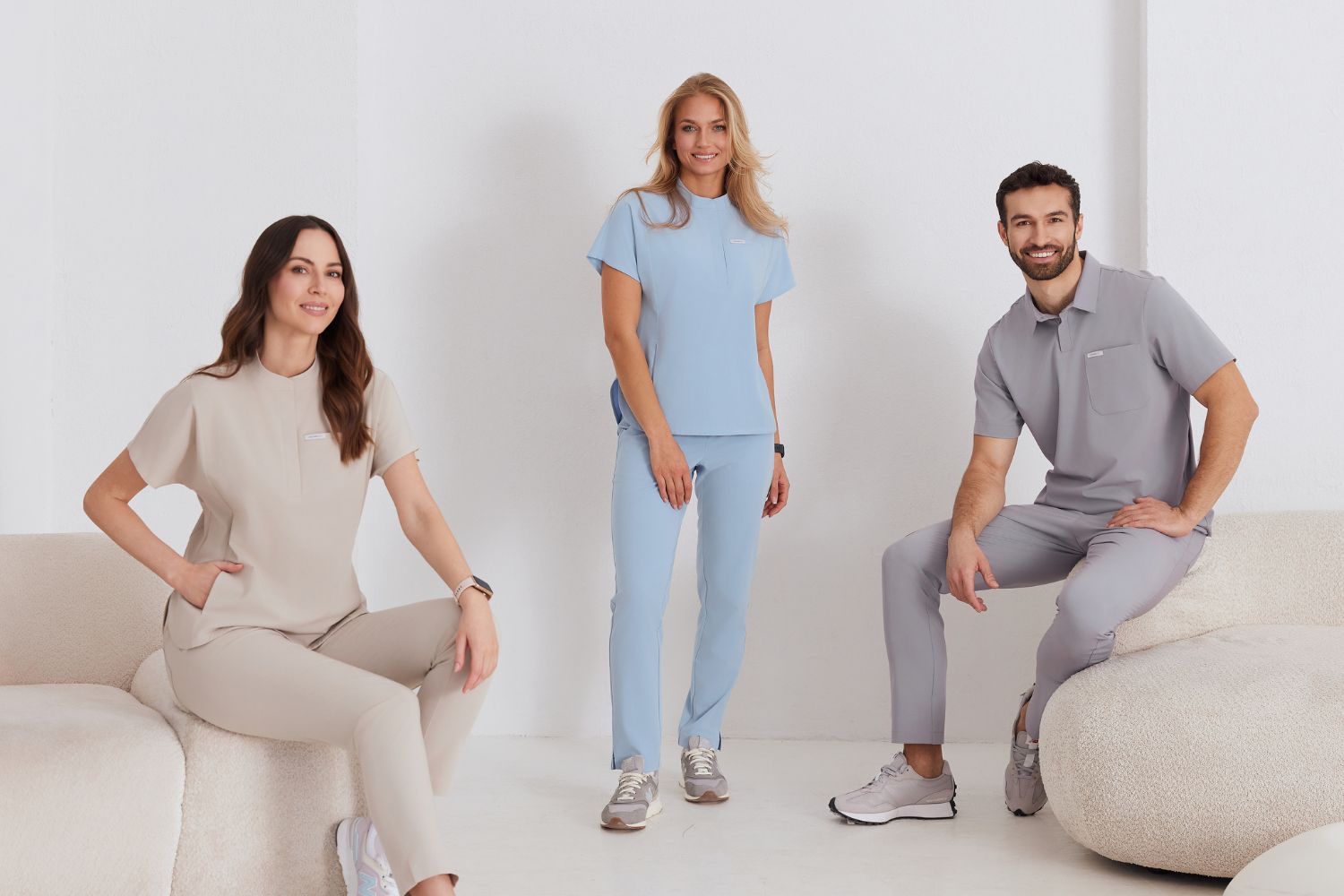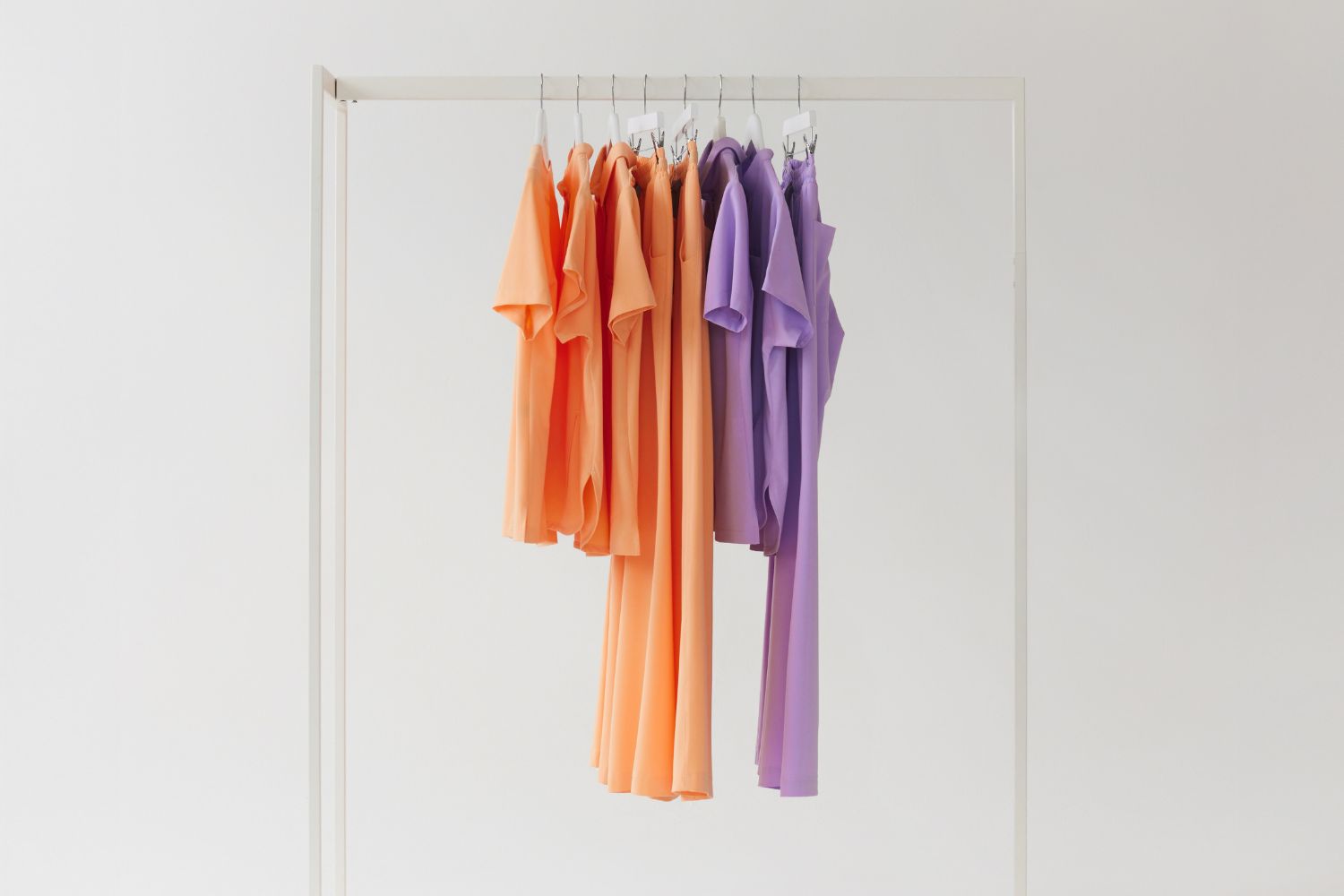
Is cotton always the best choice? Comparison of materials in medical clothing
Comfort, hygiene, durability, ease of care – these are just a few of the criteria that healthcare and beauty professionals use when choosing a uniform. All of these are provided by the thoughtful material of medical clothing.
Over the years, it is cotton that has enjoyed unquestionable confidence, being regarded as the most natural, breathable material, ideal for specific medical conditions.
However, the development of textile technology has meant that today there is much more than just classic fabrics to choose from. Does cotton still deserve to be called the best fabric?
We already know that you don’t. We’re comparing medical apparel materials to show that it’s worthwhile to open your mind to new solutions, thereby increasing your options for choosing your work attire.
What materials are used in medical clothing and why?
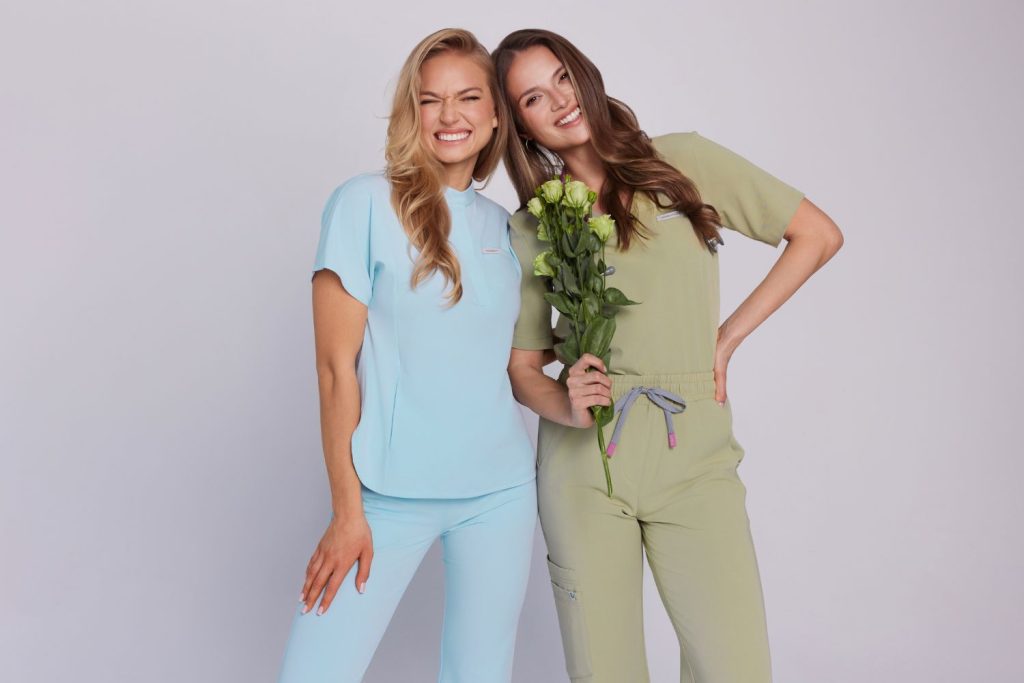
The history of medical clothing has been dominated primarily by cotton. The first famous aprons introduced by Dr. Louis Pasteur were created from this material.
Be sure to check out: The history of medical clothing through the ages
A lot has changed since then. Today, medical garments are not limited to one type of fabric. They are often created through compositions of natural and synthetic fibers.
At Med&Beauty, when we design uniforms for doctors, nurses, cosmetologists or physiotherapists, we go for proven solutions: cotton, polyester, nylon (polyamide), viscose and elastane. Each of them performs a specific function. For example: polyamide and polyester increase the durability of the fabric, give it antibacterial properties, while viscose takes care of softness and lightness.
Why is the composition of the material so varied? Because a well-composed blend of raw materials is responsible for how the medical blouse or pants look, but most importantly, they can withstand the pace of work in demanding conditions.
Medical clothing made of cotton – advantages and limitations

Why are we already moving away from 100% cotton clothing? Well, it undoubtedly has a reputation as the ideal material, because it is natural, soft, hypoallergenic, breathable.
For example, our clothes from the PREMIUM collection, where the There is as much as 80 percent cotton , provide high wearing comfort, especially during long shifts. They absorb moisture and allow the skin to breathe, reducing the risk of overheating and irritation.
Why do we add other fibers? Because cotton has its limitations. It shows little crease resistance, but this is a result of its low elasticity, and it also takes longer to dry and can lose its shape after many washings. It also won’t perform well as the only ingredient in clothing. That’s why Med&Beauty’s formulations include nylon and lycra in addition to cotton, which strengthen the fabric and provide resilience and durability.
By no means do we want to discourage the purchase of clothes made of cotton. We just want to point out that admixtures of other fibers in the composition, right next to cotton, should not be a cause for concern. On the contrary, they testify to the manufacturer’s experience and thoughtful strategy for creating functional, long-lasting clothes suitable for any job.
What else besides cotton? Viscose as an alternative solution

A replacement for cotton? One may ask: for what purpose? To enhance the properties of medical clothes.
An excellent raw material, used in medical clothing materials, is viscose. It differs from cotton in texture and properties. Certainly, it is lightweight, incredibly soft to the touch, and well permeable to air. In prolonged contact with the skin, it gives a feeling of coolness, so it is a great choice for those working in high temperatures or in procedures that require a high degree of precision and concentration.
These tips will be useful: How to choose medical clothing for summer?
Garments containing viscose guarantee comfort. This material makes the clothes fit beautifully, does not electrify and gives the clothes an elegant look. In addition, in blends with elastane or polyester, it becomes more durable and less prone to creasing.
At Med&Beauty, we use viscose to sew medical longsleeves (92 percent viscose, 8 percent elastane).
Medical clothing, and polyester, polyamide – why are these fibers important?
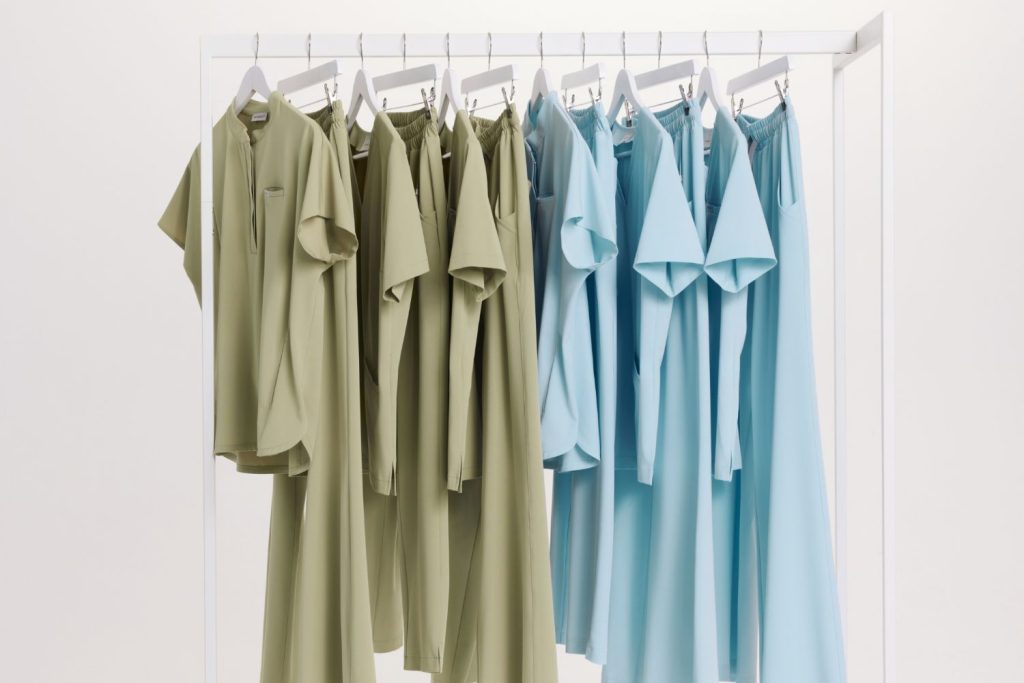
Synthetic fibers such as polyester and polyamide (nylon) are often questionable, but their presence in medical clothing is absolutely justified.
Polyester is lightweight, durable, resistant to stretching and extremely easy to care for. It dries quickly, does not crease and retains its color even after many washings.
We are, of course, talking about high-quality polyester. And we immediately dispel a myth: good polyester is air permeable and supports the body during exercise. It is not for nothing that it is used in the production of outdoor clothing. In our case, it works perfectly in medical fleece sweatshirts, which are particularly exposed to intensive use.
You can read more about them here: New in the offer, namely medical fleece sweatshirts
Polyamide, on the other hand, increases the garment’s resistance to wear and tear, while being lightweight and pleasant to the touch. It is what makes clothes with a high cotton content more durable and long-lasting, becoming more functional.
It is worth adding that a good polyamide or polyester has much better properties than low-quality natural raw materials, which are often perishable and sourced in an unenvironmental or unethical way.
Elastane – an important part of the composition of quality medical clothing

We feel that here we do not need to convince anyone: elastane is essential in the composition of medical clothing.
It appears as an admixture, (e.g. in Med&Beauty clothing at 3% in the PREMIUM collection, 8% in the BASIC collection), but its role cannot be overestimated. It is supposed to ensure the elasticity of the garment, its fit to the figure and freedom of movement. Thanks to it, the uniform does not restrain, does not drag and does not shift even in heavy movement.
Elastane makes the garment “work” with the body, while always returning to its original shape.
For those performing procedures that require precision, such as cosmetologists or dentists, it is this component that determines the comfort of the wearer, and thus realistically affects the quality of work.
What is the best material for a medical uniform?
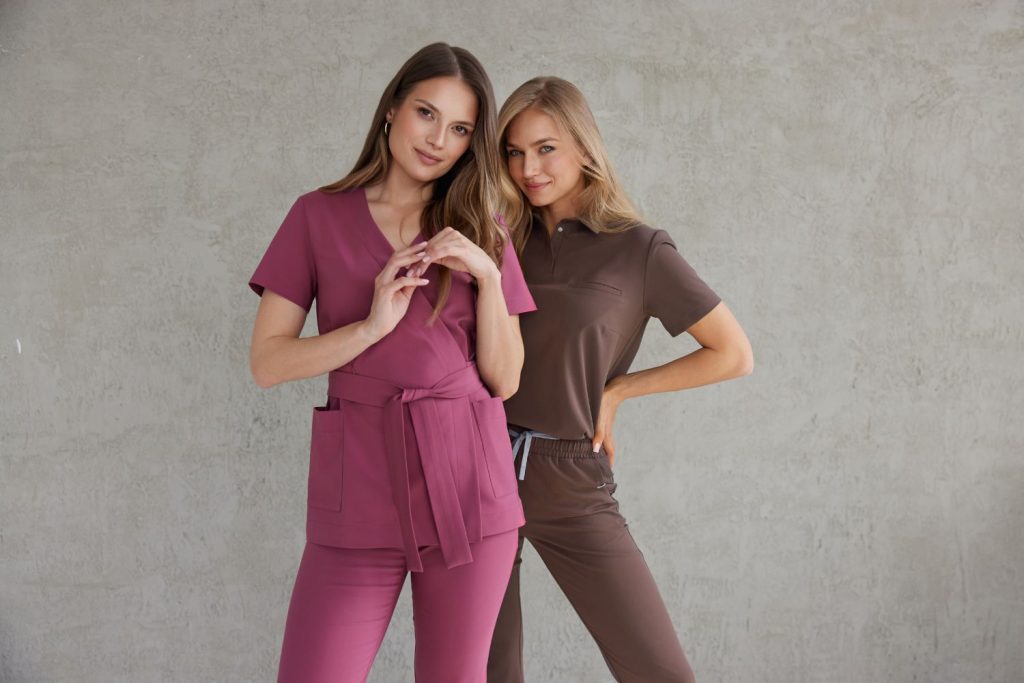
There is no single ideal material. The best composition is the one that meets the individual needs of the user. A different choice will be appropriate for those working in a clinic, another for those in hospital wards or cosmetology offices.
Before purchasing a particular garment, it is important to identify the biggest challenges of the job and set expectations for the uniform. It may be durability, or perhaps breathability or softness of the fabric, and perhaps still ease of washing or stain resistance.
Depending on your needs, choose the composition of the material in this way.
Fabric blends, as in our BASIC collection (where polyester, viscose, lycra predominate) or PREMIUM (cotton, nylon, lycra), help balance these features. Thus, the most sensible solution is to consciously adjust the composition of the uniform to the nature of the work, environment, frequency of use and personal aesthetic and budgetary preferences.
It is worth taking a broader look at the possibilities offered by modern material blends.
Viscose, polyester, nylon and elastane in the right proportions improve the functionality of medical garments, as well as making them more durable and comfortable.
If you are looking for a uniform that will meet all your requirements, bet on the proven Med&Beauty collections. Our customers confirm that the materials in the scrubs we offer meet all possible needs.
